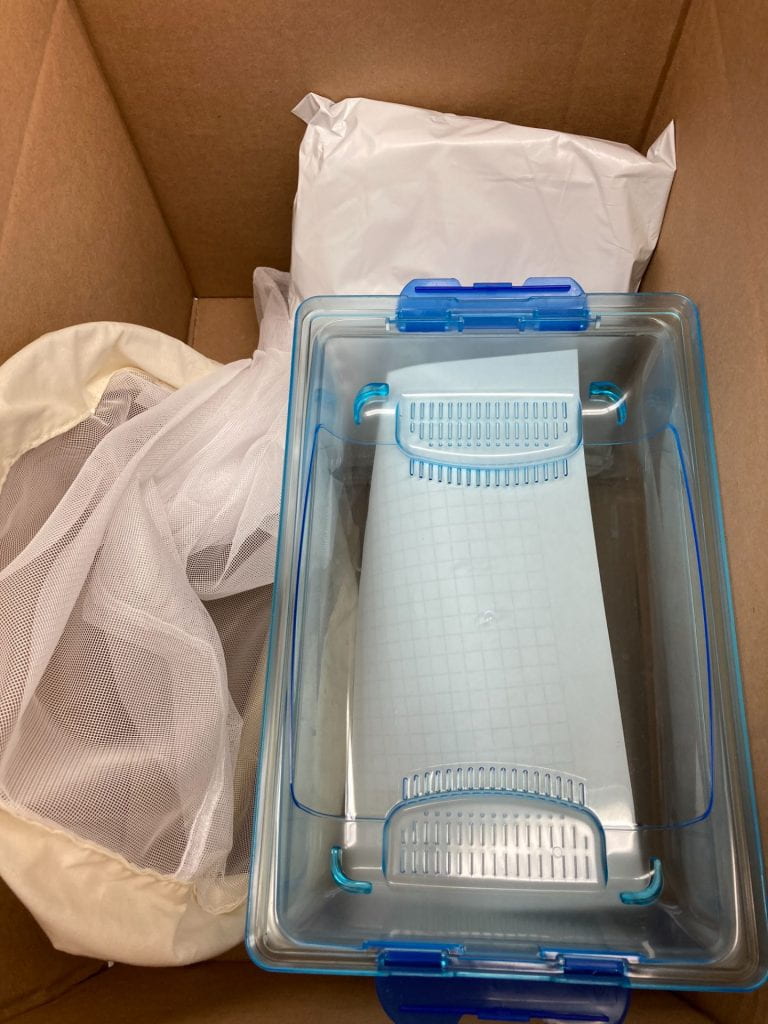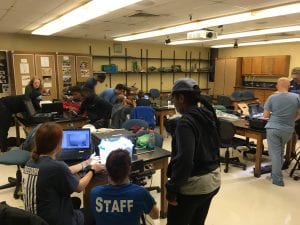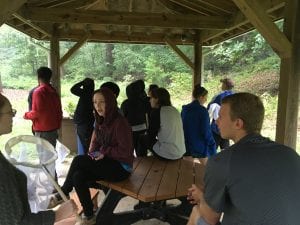Well, we’re moving along. A quarter of the way done. Week 3 was fairly uneventful as we had Labor Day on Monday and no class. Wednesday’s class focused on muscle physiology and energetics. The last time I taught the class, this was a long lecture to get through as students varied in how much muscle physiology they had in previous courses. This year, since we’re mostly remote anyway, I decided to pre-record part of the lecture, focused on sliding filament theory of contraction. I had two portions ~20 minutes each I prerecorded. This way, students familiar with the material could review it quickly. Those unfamiliar with it could spend more time with it. In class, we picked up where the pre-recorded material left off and focused on how muscles vary in their force production, from the cellular level up to whole-muscles. Only one small assignment due for the week, since there was no class on Monday, focused on students submitted two observations from nature on factors that might affect animal movement. Some examples included temperature, predation, and wind. One student had a great video of a dragonfly hovering over his car in the wind.
Week 4 was a full week, meaning we had class on Monday and Wed. On Monday 3 students came in for face-face activities. Note that anyone still planning to come to campus has to get another Covid test, which is good. Students had an assignment to use some R code to get some basic kinematics/performance data from their digitized point they submitted previously. I have learned from the first time, that this is one of the biggest hurdles. Some students have experiences with R, some do not. Some have Mac, some PC. So, my plan was a live tutorial and trouble-shooting segment. Which seemed to work well. After our live session, students on campus went to the Glen to see what they could collect and film. We brought back some sharp shooters, crickets, a moth, and a damselfly. Students then practiced using the cameras to get videos of animals moving.
Wednesday’s class had a lecture focused on terrestrial locomotion followed by our second Scientist Spotlight with Dr. Ryan St. Pierre, a mechanical engineer from Carnegie Mellon University working on micro-robots. Before class I had virtual office hours, where several students and I did some more troubleshooting in R, but got most of it working. Lecture was not one of my best, as I rushed it. Being virtual doesn’t help as it is hard to gauge how much students are understanding. Having the Spotlight at 4 meant I kept my eye on the time, trying to cover everything (I know, rookie mistake). And, I extended the invite to the Spotlight to our Introduction to Research Methods students as well as some others, who started popping in to the waiting room way too early, distracting me. Luckily I remembered to pause between material and a student asked to review. The Scientist Spotlight was great, these are becoming some of my favorite activities this semester. We had about 50 students join us and learned how Dr. St. Pierre draws inspiration from insect locomotion to make micro robots. We do not have an engineering program here, so I think it was great for students to see this side of applied Biology. They also had some great questions. A definite pro of the week.

Some cons of the week. It is difficult this semester being remote/hybrid, who knows. I am concerned for some students that aren’t keeping up or getting lost, as it is hard to talk to them in class and check on them. It is a choose your own adventure. Some are doing most of it asynchronous, a few come in for face-face, most are synchronous and virtual. Not easy to manage. I’ve been sending emails out, but its different than being in person. Students are anxious about the final paper, I’m nervous about projects. I think this can work remotely, but I’m not sure. they have to submit initial project ideas next week, which is when we’ll reassess. I’ve also added a new hat to wear, postal service, as I am shipping out supplies to students working from home. Included in the kits are an insect net, butterfly cage with viewing window, plastic cage, ruler, and grid paper. The “basics” to film animals. ULA Karlina made some videos on how to make DIY tripods so they can film at home. So, we’ll see if this works.
Up next week, our third Scientist Spotlight, learning about jumping, and trying to get an idea of projects.













 A quarter of the way through the semester. Weather has not been on our side. For week 3 we spent our time in lab practicing to film using some of the crayfish we had. Everyone got some crayfish escapes. We then moved to the computer lab to learn digitizing using the MTrackJ plugin for ImageJ. We used one of the praying mantis videos I had, and after we worked through the protocol, students started clicking (and clicking and clicking and clicking). They had an assignment due at the start of the next lab day tracking one point from one of the crayfish videos. Digitized points were graded based on this
A quarter of the way through the semester. Weather has not been on our side. For week 3 we spent our time in lab practicing to film using some of the crayfish we had. Everyone got some crayfish escapes. We then moved to the computer lab to learn digitizing using the MTrackJ plugin for ImageJ. We used one of the praying mantis videos I had, and after we worked through the protocol, students started clicking (and clicking and clicking and clicking). They had an assignment due at the start of the next lab day tracking one point from one of the crayfish videos. Digitized points were graded based on this 